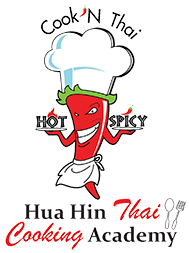
Why coconut milk curdles?
I often hear the instruction to stir often when cooking coconut milk otherwise it’ll turn into curds. I never questioned the common wisdom, just accepted that that is what we do when we cook with coconut milk.
Recently, I met with a ThaiTable reader who asked why her coconut milk curdles. I promised her I’d find out why. Then I took the question straight to my biochemist sister who gave me a scientific paper to read.
Roughly, raw coconut milk consists of coconut oil, protein and water. In its natural state and at room temperature (think tropical island), the protein acts as an emulsifier, keeping the coconut milk looking homogenous. An emulsifier bonds oil with a protein in the milk. When coconut milk is heated up, the protein changes its shape and ability to react with water and oil, which is what scientists call ‘denaturing of the protein’. The protein releases oil and water and contracts into a tight chain. These contracted protein chains are visible as the white specks or curds. The curds can clump and get bigger if not stirred.
The act of stirring is emulsifying or keeping the oil, protein and water mixed together. When coconut milk heats up, the curds still form but they are smaller and harder to see.
Coconut milk curds change the look but not the taste and texture. Simply stirring the coconut milk will blend the curds back again. To prevent large curds from forming when you cook coconut milk, ‘stir often’ does the trick.

